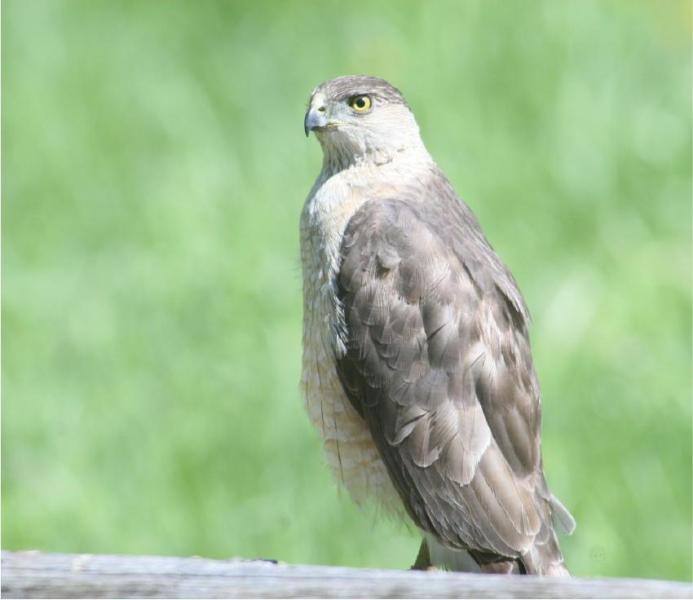Cooper’s Hawk - A Bird Eating Bird
By Dave Hanks
Hawks are very difficult to approach. This one was by a forest-service water trough in North Heglar Canyon. He seemed cooperative, and so I crawled on my belly and got very close to take this picture. He’s a young hawk and perhaps that is the reason I was able to get quite close. He was frequenting the area in hopes of catching other birds that were coming in to drink.
Cooper’s Hawk & its smaller look-alike, the Sharp-Shinned Hawk, are both predators that feed on other birds. “Sharpies” feast on the smaller species while Cooper’s will take birds the size of doves. Their falcon-type, streamlined bodies make swift pursuit possible. Exceptionally maneuverable through trees, they really “zoom” after their prey. We have an extensive bird feeding set-up in our yard, and these two hawks hang around in our trees. They make surprise attacks, scattering birds in all directions, as they swiftly appear out of nowhere. The reason why bird feeders need to be situated close to cover, is so a quick dive into a protected area is possible.
These two species are classified as Accipiters. These are medium-sized hawks with slender bodies, long tails, and short wings. These attributes give them great maneuverability in the tree habitats in which they reside. Cooper’s is 14” to 20” long. “Sharpies” are 10” to 14” long.
Another difference is that the Cooper’s Hawk has a rounded end to its tail while Sharp-Shinned tail is squared.
Although we hate disturbance at our bird feeders, the appearance of one of these predators is always exciting. They are only doing what they are programmed to do. They are not nearly as great a menace as are the many stray house cats that we are plagued with – or the dogs that feel free to frequent our yard.
|
